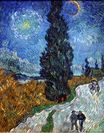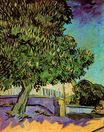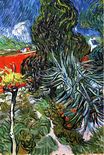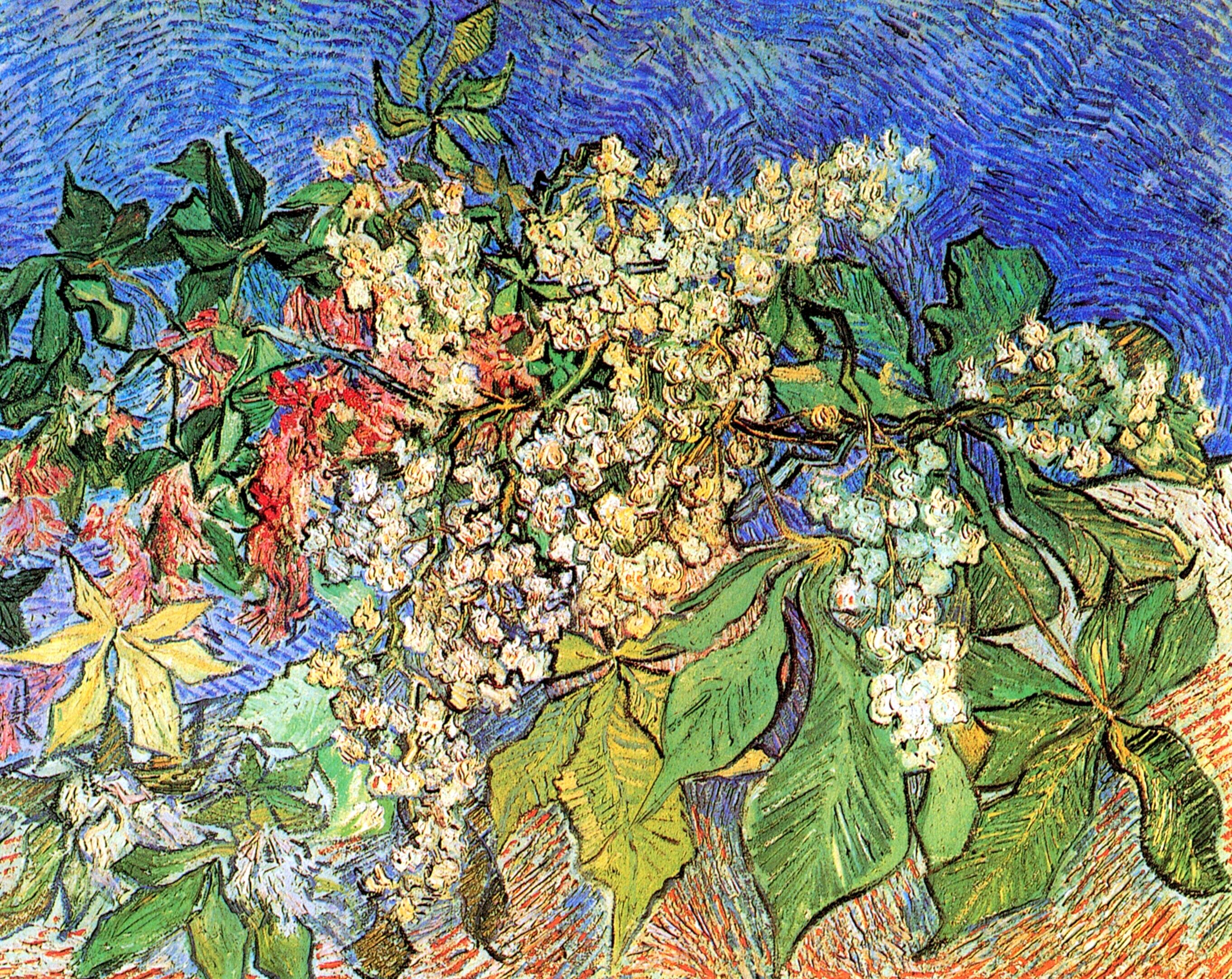Винсент Ван Гог - Ветви цветущего каштана 1890
 |
 |
 |
 |
 |
 |
 |

Ветви цветущего каштана 1890
72x91см холст/масло
Foundation E.G. Bührle, Zurich
<< Previous G a l l e r y Next >>
From Foundation E.G. Bührle, Zurich:
After the end of May 1890, Vincent van Gogh lived in Auvers-sur-Oise, spending a lot of time
with his doctor Paul Gachet. Gachet was not only a painter himself; he also knew several Impressionist artists personally. Working intensively, van Gogh was now producing
one or more paintings each day. For the work that you see here, he chose an especially imposing format. The level of detail is consistent throughout and the structure is
that of a carefully composed still life. Placed at the centre is a vase, which, under a branch with white chestnut blossom, also holds a sprig of rhododendron. The vase
stands on a round table, casting a shadow onto its surface. Only the blue that encompasses the blossom and leaves above it is imaginary, recalling the sky against which
they appeared before being cut for the floral arrangement. The style of painting reveals how van Gogh had continued to develop the methods of neo-Impressionism in his
own way. The dashes of paint of his earlier style have coalesced into thicker, more plastic brushstrokes. The pattern made by them has become an essential part of the
pictorial content, lending the static motif a dynamic quality of its own. It is worth noting that the original matt texture of this painting's surface has survived
un-tampered with. After the death of van Gogh, the still life initially remained in Gachet's house, as a gift of the artist's family. Then it was bought by a private
collector in Berlin, in whose family it stayed for over forty years until Emil Bührle purchased it in 1951. The painting was only ever on the art market for a very
short time. It was thus spared the fate of many other works by van Gogh, which completely disregarding the artist's intentions were subsequently coated with glossy
varnish.